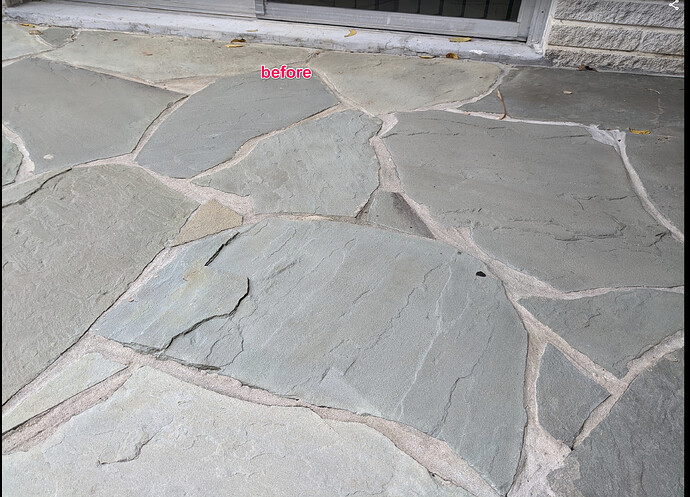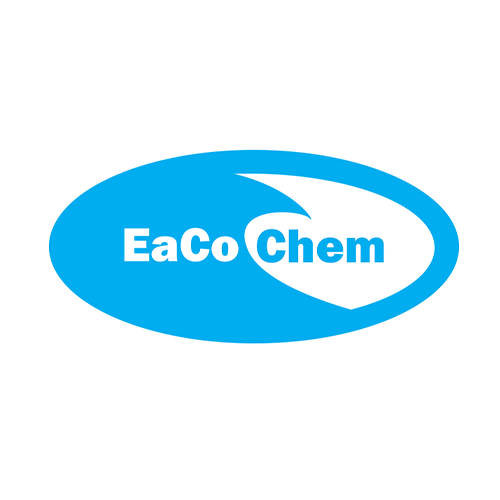I cleaned and sealed a pool deck last Wednesday using solvent based SEK SB-4400 sealer. It all went as planned except when part of it didn’t dry or cure properly. It still looks wet in places that didn’t seem to absorb as well as others. I have spoken with SEK tech support, rented a hot water PW, use xylene, sodium hydroxide, scrubbed it etc. so basically I have tried everything I or they can think of to remove the excess sealer. I am hoping one of you that has done a lot of sealing might have an idea or maybe @CaCO3Girl has an idea for something that will break that stuff down. I have used it many times in the past and never run into this. Thanks
How long did u wait between wash and sealing?
Looks like it’s going to be an absolute nightmare to remove, hope you find a method that works otherwise its looking like an insurance claim .
Acetone may dissolve excess but it may just make things worse by turning it into sticky goo .
Siloxanes are by nature impervious to water, so nothing water based will touch it. It also doesn’t dissolve in the traditional way.
You need a solvent based stripper made with either methylene chloride or furfuryl alcohol. MC has been banned in most strippers by the EPA and I can’t remember the name of the really powerful furfuryl Alcohol stripper. I will say that these items may still be found in graffiti removers; you may want to start your search there, since spray paint often has siloxane or silicones in them.
Please be careful, these are powerful strippers!
I just remembered the furfuryl alcohol strippers name is Flood.
Whenever @CaCO3Girl solves a mystery on this forum, it’s like an educational Disney land for me. Hahah… that kind of intelligence level is impressive 

Thank you all but particularly @CaCO3Girl. If your suggestions don’t work out I can’t access them my fear it that it is an insurance claim. I’ve been worrying about that for several days now. I’ll let you know if it pans out. Thanks again.
I just want to ensure I’m thinking what you are thinking. Flood Pro Series Wood Stripper, correct? It’s primary active ingredients seem be furful (sp?)alcohol and sodium hydroxide.
Yes, straight caustic won’t work, but the furfuryl should break the bond and allow the caustic to do it’s thing. Don’t be alarmed by all the poison labeling, lol! Sorry, but it is good stuff when you need a solvent based stripper.
Good luck!
And yes please @ me when you see if it works…and don’t forget to pick up a graffiti remover too to test that.
It’s not solved yet, but I have high hopes.
Mark, I had same problem, though not nearly as bad, caused when I was doing some pavers and didn’t let first coat dry enough or absorb completely before applying the next coat. Fortunately was just on about a 2 foot section. Acetone will remove, but as Aussie said, kind of a gooie mess that you have to scrub a little and then get off. Can try a little section and see if it works for you. good luck.
You can get methylene chloride stripper from Prosoco. Not cheap - get ready…$125 per gal.
It is their strongest stripper. I would roll it on, agitate, let dwell 5 minutes and then hot water rinse and hope for the best.
@CaCO3Girl, @Racer and all ya’ll, here’s what learned today.
-
When the Flood stripper goes on red, don’t panic. lol. It starts working and turns yellowish. It did break the bond and start the process. That stuff is pretty potent and will be in my arsenal from now on. As on off the shelf stripper I was impressed. So thank you again Ma’am.
-
I used SEK’s Efflo Off straight (as opposed to the regular dilution rates) as suggested by their chemist via their tech support Jay. I have to add that Jay was extremely supportive and was owning this with me so I continue to feel good about using their products. Lonny Shook, SEK Field Rep was texting me last night to see how it was going.The Efflo Off was the faster of the two or at least the most violent from a reaction perspective. To the point that I could apply it, let it foam, aggitate with a bristle brush and rinse with a garden hose.
The Efflo Off immediatly foamed as you would expect, except where the siloxane was the heaviest, then it would gradually react and after a couple of applications was pretty much done and the color all still blended like before. I applied it and then dried it with a leaf blower. I’ll probably have to reapply it in a few places but i can do that when i go back to stain the fence. I hope this helps someone and thank you to all who contributed on the thread.
@MDA1775 I’m so very happy for you! That Flood stuff is pretty awesome, and no it’s not my formula. I don’t like that it’s sooo dangerous, even more so than a normal stripper, but it does work miracles I’ll give it that. It’s just overkill for most jobs in my opinion, but I thought it would work for what you were trying to do.
I’m also glad you had vendor support. It sounds like a good day 
@CaCO3Girl Hi, I finally came across this thread after much searching with a similar issue to my flagstone patio as described by @MDA1775 where you seem to offer great advice.
I used a similar product on my flagstone patio called Stonetech Enhancer Pro which was meant to seal and enhance the color of the stone. (see photo)
Either I applied it wrong; it was too humid or the product was just not good, but it left my patio splotchy, sorta of “streaky” almost like a dirty/greasy look (even though it is not to the touch) .
See the after photo below of my front porch as compared to my back porch where I thankfully did not apply the sealer. having two patios out of of the same flagstone gives me a good contrast of how it is supposed to look.
I called tech support a few times, one technician suggested a very expensive product from Germany to remove it while another said that perhaps it did not penetrate and powering washing should do it. I have not rented one yet as I just do not believe that power washing is going to remove 3 applications of Siloxane which I was told is that this enhancer sealer is made of.
I followed another resource which said that if left on long enough, sodium hydroxide would eventually remove the sealer. but the trick is to not let it dry out.
So, I bought some pure lye, mixed it with water and applied it to a few stones to test it out. As the article suggest, I even covered it with plastic wrap to let it really work on the surface without it evaporating to soon. I left it on for one trial for as long as 12 hours or more.
I feel like it may have done something to the sealer, but now I see white patchiness on the stone and not the really nice rich even colors that the stone was before. (I sure regret ever trying seal this flagstone, it sure looked better before)
-
Do you think the white I am seeing is from leaving the sodium hydroxide on too long which caused the white chalky look (I even have what appears to be splatter marks from one application but I am not sure how that happened) OR is this something different?
-
Do you think this product you recommended in this thread will also help my situation?
“Flood Pro Series Wood Stripper” -
Will I ever really be able to get to the nice even rich color and texture it was before?
Thanks
I cannot add more photos as a new member…
click the shared album link here to see the rest of them:
https://photos.app.goo.gl/r7xPaoDU2xDFUmnq5
Firstly, welcome to the forum. Glad to have you. Secondly, you have to show me how you put the ovals and text on those pictures. Unfortunately, I’m no help on this one but it seems like you’ve summoned pretty good help already. There may be some others here that can give you good insight as well. I think @Greenman is some type of paint and coating salesman and may know more.































